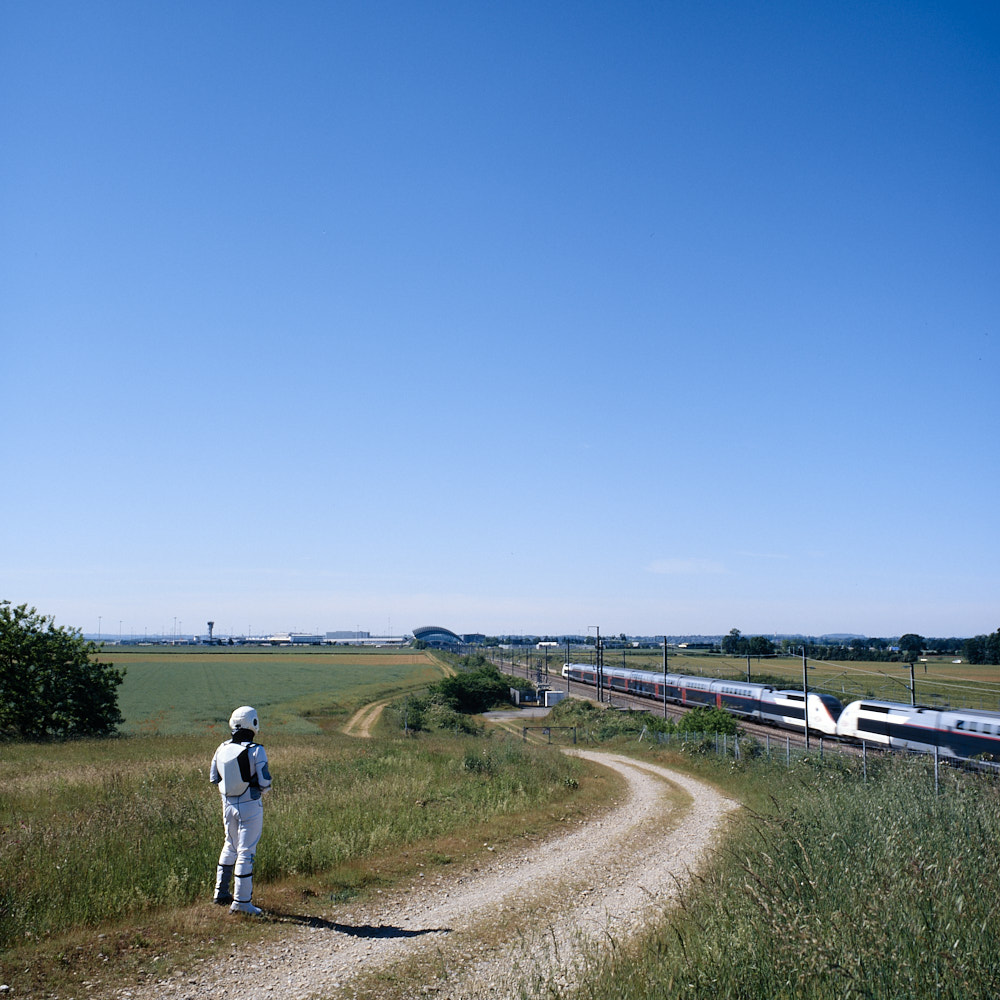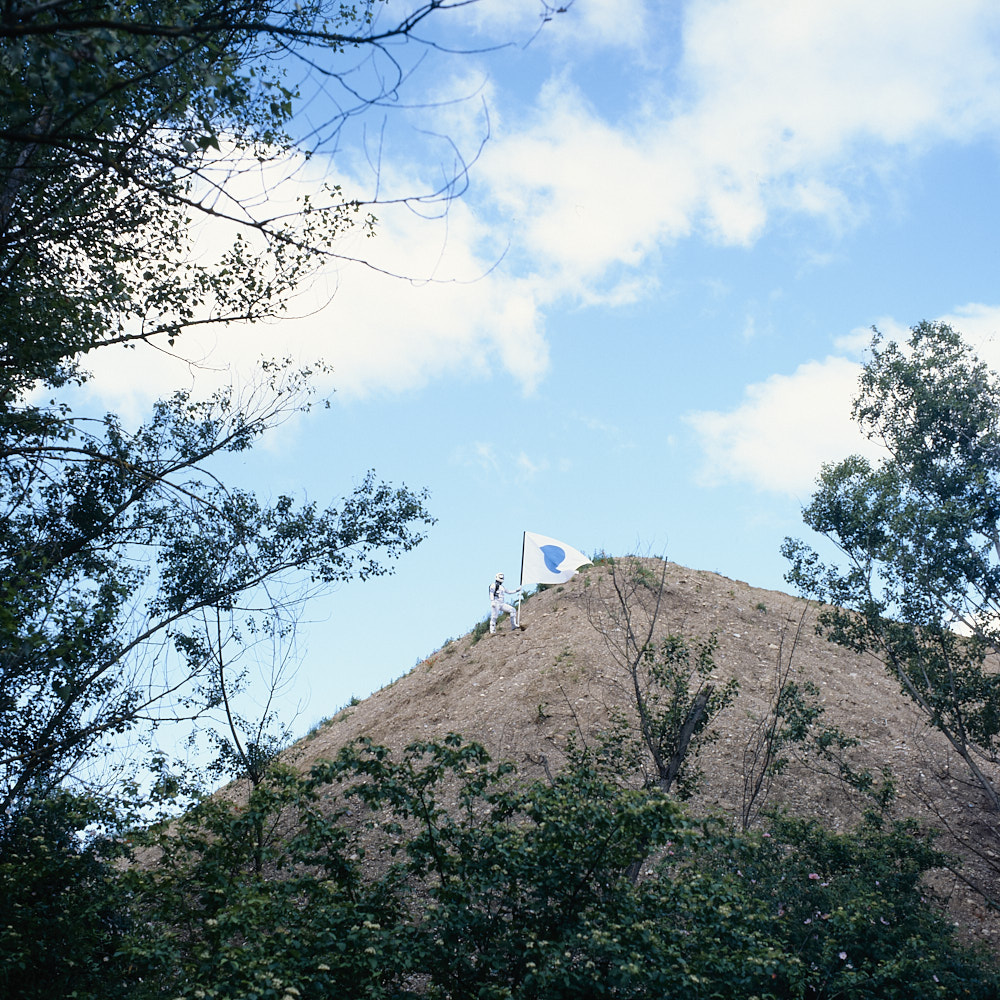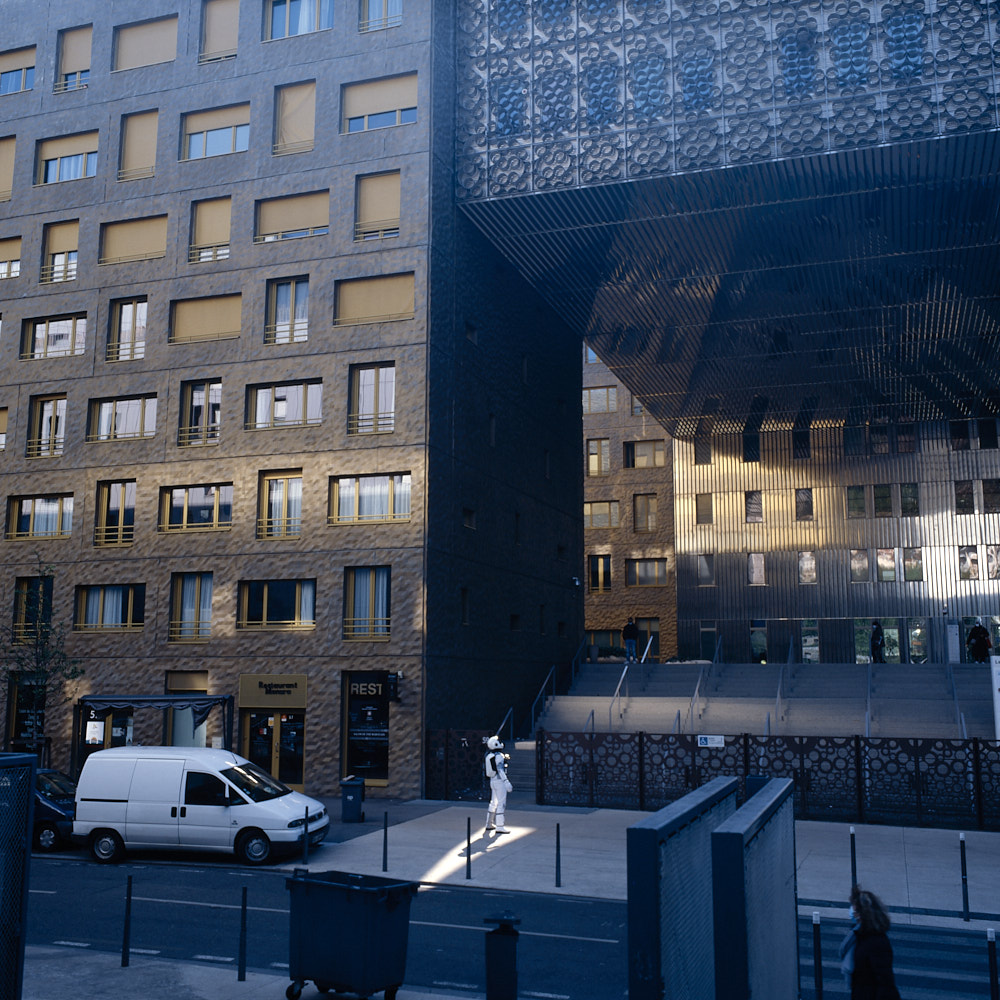
On 7 December 1972, the crew of the Apollo 17 mission took a photograph of the Earth in its entirety that has since become an icon of environmental awareness. With the support of the Lyon Urban School, a research programme devoted to the global challenges of environmental change, the photographer Adrien Pinon has conducted a photographic investigation freely inspired by this photograph, which aims to ask the question: what is the state of this planet half a century after it was revealed in all its unity, beauty and fragility?
In order to present some answers with an original perspective, Adrien PINON has created a fictional work in which two spacemen are tasked with collecting materials, objects and landscapes on Earth that are characteristic of the Anthropocene – the name of this period proposed by certain scientists to characterise the era in which humans have become a force capable of modifying the balance of the global system.
Transformation of soils, mobilities, energies, the survey aims to identify the signs of the “Great Acceleration” that our world has experienced in all fields since the shooting of this small “blue marble” in 1972.
In the following interview, Adrien Pinon talks about this project, which is currently presented in the form of an exhibition at Leonard.
Could you tell us the story of The Blue Marble photo, which is celebrating its 50th anniversary today?
The Blue Marble photo was taken on 7 December 1972 by the crew of the Apollo 17 mission. While en route to the last mission to the Moon, one of the astronauts turned around and noticed planet Earth, more than 45,000 km away, in all its splendour and fragility in the midst of the dark and hostile vastness of space. He intuitively decided to take some pictures even though he had absolutely no obligation to do so.
This photograph will very quickly become an icon, especially at a time when the ecological cause is beginning to grow, and still retains its emotional vivacity by showing us – like a symbol – the continent of our origins: Africa.

“The Blue Marble Programme” is designed like a space expedition, but on Earth. Could you explain how you designed the device?
One of the challenges of this photographic story was to make it believable. The first step was to work with a cosplay agency to come up with a costume that made it look like we were dealing with a modern spaceman on a mission. I’m delighted with the final design, which is quite similar to the one proposed by SpaceX, which was unveiled a few months after ours! The second stage involved scouting to find environments and scenes that would effectively speak to the Blue Marble Programme mission, which was to discover the evidence of our Anthropocene period. Thus, five main areas were visited during the survey: the dense city, the periphery, the countryside, the mountains and the coastline. The third and final stage was the study of the history and cultural references (particularly films) evoking my space adventures, in order to use them as a basis for the narrative of the investigation. The attentive person will perhaps realise that many photos of the “Blue Marble Programme” take up strong visual references from the Apollo programmes, which serve to inscribe it in the same imaginary world.

What types of materials did you collect? Did you make any “discoveries”?
The aim was to really let ourselves be surprised and to collect what we saw on our way during the days of shooting. Basically, all we had to do was bend down and collect rubbish, stones, earth, water, coal, concrete… anything that would fit in a backpack (the spaceman’s). The analysis of our world can really be limited to what we have, and what we leave lying around, under our feet. A few objects chosen at my home were added to the inventory to address key issues of the Anthropocene: batteries, red meat and jeans for example.
In the end, the real surprise in our “discoveries” came from our effort to change our usual view of what waste is and to realise that the abandoned buildings we came across were nothing more than huge, immobile wastes polluting the environments in which they were located.

Is there a particular message you want to convey with this investigation?
With this investigation, I wanted to take up and exploit the general public’s – justified – infatuation with space adventures, with its heroines and heroes, but by bringing my feet back down to earth. My intention with this story is really to remind us that we must put the same scientific effort and financial resources into studying the current dynamics on our planet that call into question its future habitability as we do into space programmes.
I don’t believe for a second in the sweet delusions of certain billionaires working on space colonisation and I wonder who does. With Programme Blue Marble, I focus on how we inhabit our unique Blue Marble and want to make people think about what we can still save and keep alive, and even prosper, for ourselves and future generations.

The Blue Marble Programme exhibition can be viewed by appointment at Leonard’s, 6 Place du Colonel Bourgoin, in the 12th arrondissement of Paris. Please contact: lucas.tiphine@vinci.com